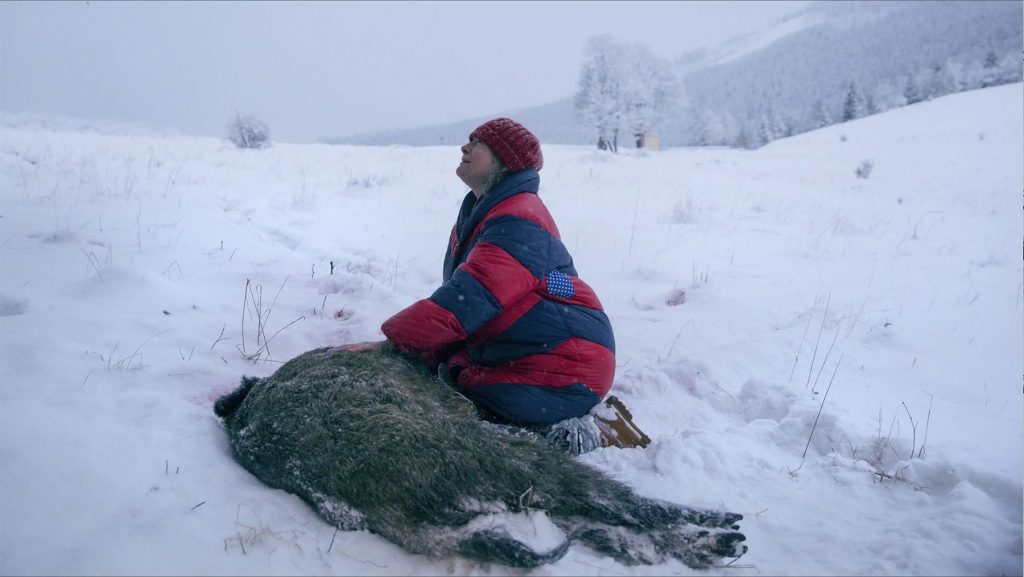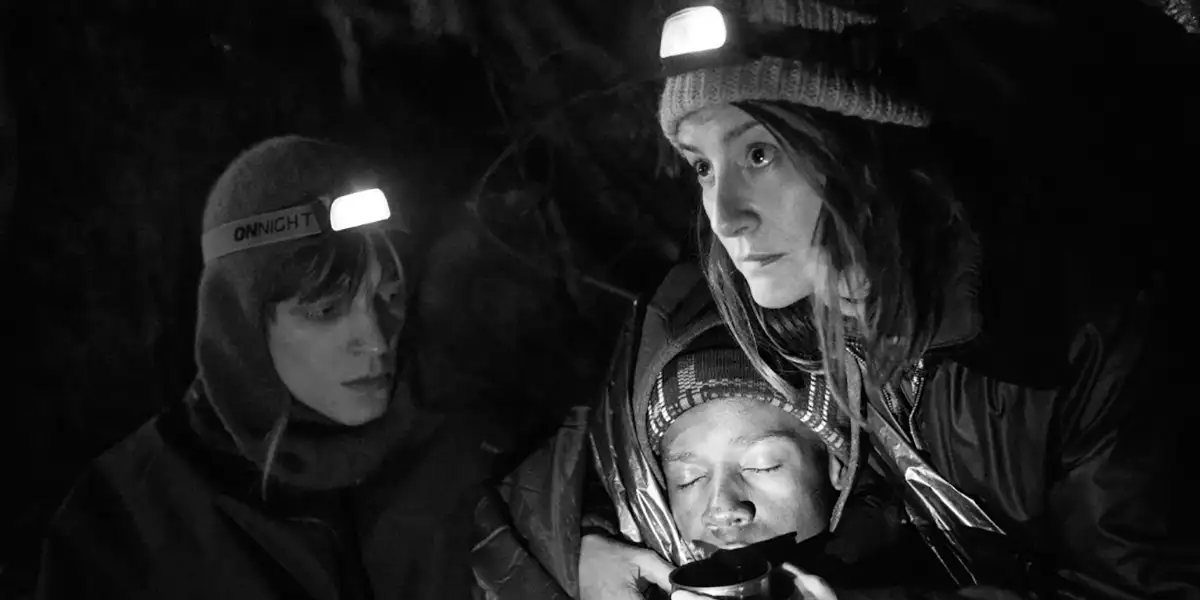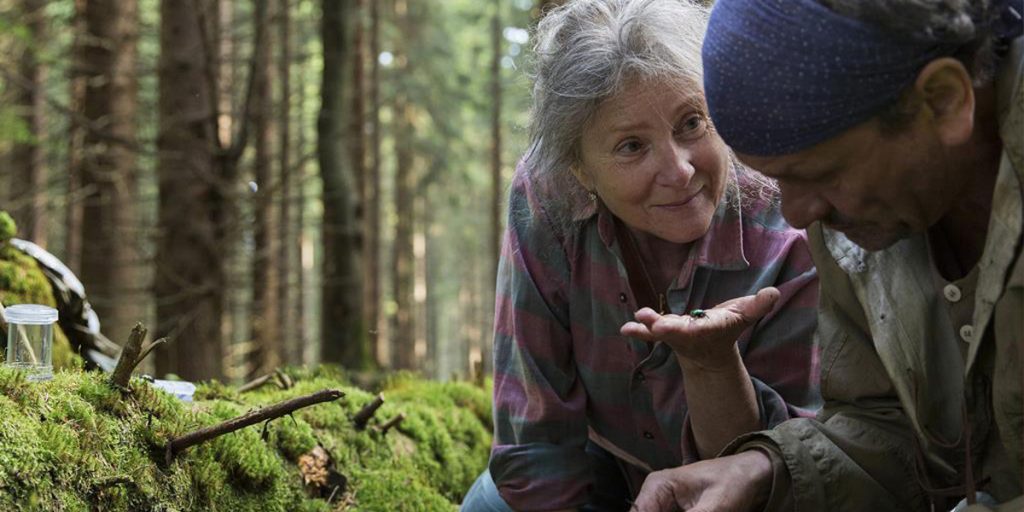Agniezska Holland ’s crime thriller Spoor uses its pulp trappings to locate uncomfortable and compelling truths about its wonderfully drawn characters.
It’s not long into Spoor that protagonist Duszejko (Agnieszka Mandat) loses track of her beloved dogs somewhere in the dark forest of the Kłodzko Valley. Duszejko, more at peace with nature than the entrenched hunting community her modest home borders, immediately suspects foul play, and quickly draws herself deeper into a larger homegrown mystery when her suspicion is matched by the bizarre murder of a young hunter.
Spoor, a recent work from the esteemed Polish director Agnieszka Holland, hasn’t received a U.S. release since its completion and European release in 2017, but it remains a fascinating work. Spoor takes its story from Olga Tokarczuk’s 2009 novel “Drive Your Plow Over the Bones of the Dead”, a deliciously violent pulp title if there ever was one, while the film is named after a word meaning “the track or scent of an animal.” The conjunction of these two names beautifully compliments the film’s exploration into the fine line between man and beast.
Many of the film’s characters are hunting something: Duszejko searches for her dogs and a killer, a young man and woman (Jakub Gierszal and Patrycja Volny) grasp for autonomy and professional respect in the valley community, and a mysterious Czech entomologist (Miroslav Krobot) seeks a more benevolent, inquisitive relationship to the natural ecosystem of the valley. The hunters, of course, pursue game as they always have. Despite Duszejko’s emphatic pleas for the benevolent treatment of animals, the film’s occasional intertitles are dispassionate reminders of regimented, monthly hunting seasons.

Spoor is aptly drawn to the murky details of its gorgeous setting. The Kłodzko Valley is early on shown in the warm glow of morning, mapped to Duszejko’s loving perspective, but as the hunt thickens, so too does the darkness of the forest. Employing natural lighting to gaze into the abyss of night, cinematographer team Jolanta Dylewska and Rafal Paradowski successfully paint uncertainty and dread. The slopes of the valley are oftentimes peered at from a great distance, encouraging the eye to wander, drawing the viewer into its mystery. Darkness sometimes overpowers the frame and at other times merely seeps around the edges of a near-vacant apartment or seemingly innocuous drive into town. These images are slammed against visceral close ups of mangled bodies- chilling images not for the faint of heart.
There are many discursive concerns which swirl in the night: a stifling church ignores Duszejko and favors slaughter while bureaucratic incompetence in the local police and government impedes investigation into the killings. A goofy, goes-nowhere hacking subplot takes up a weird portion of the runtime. A harsh drumbeat rails in linear fashion against the film’s mysteries, stymying often.
Not every element is deeply explored or successfully integrated, but Spoor offers more than enough to load every character with detail and scenes with potential clues. Holland remains a master of tone. Her script, co-authored with the source novel’s author, stacks oddball moments carefully next to grim details. Spoor is not always consistent, and the ending makes a series of questionable decisions. It works best, and often very, very well, at bringing viewers into the hunt, even if it merely grazes some its final targets.
Spoor is now available to watch on digital and on demand. Read our review of Agnieszka Holland’s Mr Jones.

 loudandclearreviews.com
loudandclearreviews.com
